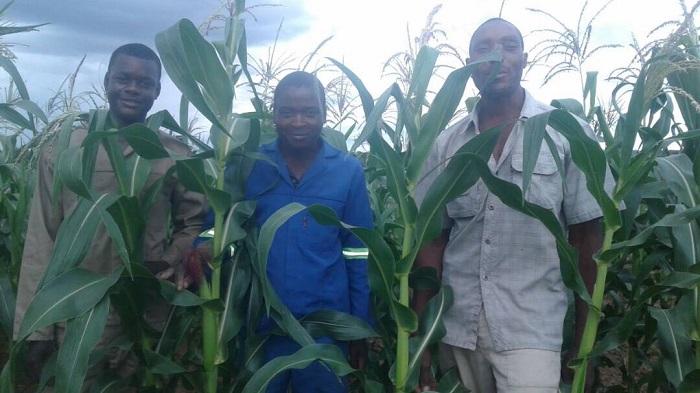Mlamuli ,Moses and Learnmore at a farm in Silobela ,Zimbabwe
Nqobile Bhebhe ,Zimbabwe
Zimbabwe is headed for average maize production this season of about 850 000 metric tonnes down from previous projections of 1, 7 million tonnes due to prolonged dry spells in January.
Last year was recorded as the country’s best agricultural season in many years when Zimbabwe recorded some of its highest rainfall since independence in 1980
National maize production from the 2016/2017 cropping season was estimated at 2,16 million metric tonnes, 320 percent above the previous season, and 140 percent higher than the five-year average.
The yields were attributed to favourable weather conditions and a special programme for import substitution, commonly known as command agriculture
However, agricultural experts say the current crop situation in the country was very bad although showing signs of improvements in some parts of the country.
Zimbabwe Commercial Farmers Union (ZCFU) president, Wonder Chabikwa told local media that : “We cannot have very good harvests as we expected after such a dry period. The current rainfall patterns will improve our harvests to above 50 percent of our 1, 7 million metric target.
“This generally translates to around 850 000 metric tonnes output of grain”
On average, Zimbabwe needs about 1,8 million metric tonnes for consumption, including small grains such as millet and sorghum annually.
Dry conditions hit Zimbabwe early in the summer season, resulting in crops suffering moisture stress.
Experts attribute this to dynamic atmospheric systems that suppress moisture while buoying hot and dry coastal winds.
The mid-season dry spell in January raised fears of a possible drought not only in Zimbabwe, but across the region, with Zambia slashing the projected output from over three million tonnes to 1,8 million tonnes.Erratic rainfall and dry conditions persisted across the country from October to January and every province received below-average and poorly distributed rainfall.
The abnormal dryness and high temperatures resulted in severe moisture stress for most crops.









